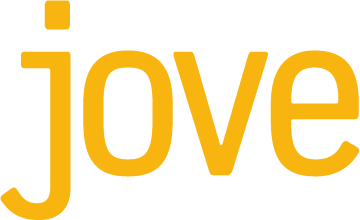Marketing in a crisis: Gramercy FOCUS Boston
/Faced with a market dive, a world pandemic, and a few last-minute cancellations, Gramercy Institute CEO Bill Wreaks cleverly tweaked today’s Gramercy FORUM panels into a series of discussions touching on crisis marketing.
Despite all the travel bans going down this week, over 50 Boston-area client-side and agency marketing practitioners showed up. One senior marketer from a large index/active manager later said to me it was one of the best events of its kind she’d ever been to.
I’ve provided the more interesting quotations from all the panel discussions except the one I participated in. They’ve been edited, reworded, and combined, for easier reading.
Group discussion: Marketing during a crisis
“Listen, and make a human connection with your audience.”
“Don’t talk product.” [Most agreed, although a few think product conversations can make sense if you’re solving a pressing current need.]
“Watch the conversation (media, social, internal interactions) and adapt your sensibility and tone to that conversation.”
[CMO at a $40bn+ shop] “I recommend three things:
1) Have a rapid response system in place, including an arsenal of content at the ready
2) Don’t go silent—and be authentic
3) Have a process for pulling down content made inappropriate/irrelevant by the crisis.”
“This is a chance to reset with sales, who are now largely grounded and can’t make face-to-face visits. Marketing can do a lot to fill the gap.”
“Good approach: ‘This is a humanitarian crisis first and foremost. We have been expecting a downturn, so let’s look at this as an opportunity. We’re here for you.’ Balanced, respectful.
Not-so-good approach: ‘Coronavirus! Conference call at 11!’”
“Be patient, share your knowledge, arm advisors with marketing content that helps them address client concerns.”
Panel: The financial brand: Why it matters in 2020—and beyond
“It’s time for marketing to step up. We had a beige brand when I first started at [$400bn+ firm]—and that was OK. Now, your strategy has to be differentiated. You need to stand for something.”
“We aim for a clear, actionable brand that’s easy to for advisors, investors, and employees to understand.” [~$1tn shop]
“Today it’s about finding a balance between technology and what’s human. Not holding back from embracing technology, but also not losing your humanity.”
“Yes, transparency is critical, in a crisis and in normal times. But it’s no longer a differentiator—it’s expected.”
“Competing messages create brand confusion. We focus our brand communications efforts on the people who do the communicating: all employees, including the sales teams, to make sure they’re clear and communicating it correctly.”
“Brand and culture shape each other—one doesn’t come before the other. Brands have to reflect the culture to be authentic. They’ll have an aspirational component, but you’re not making a wholesale change to the culture—you’re shaping it at the margins.”
“’Brand’ is what we’re hearing across all clients today. It’s top of mind for everyone. Even hedge funds that had almost a disgust for marketing are now asking us about branding.”
On measuring the brand
“Our formal metric is an annual employee survey: how much do they play back what we want them to say? How do new products, our diversity push, campaigns align with the brand, in their eyes? We look sporadically at external research that we can get for free.”
“I take external surveys with a large grain of salt—the big names are always there because they allocate more dollars. We also use internal surveys, plus ad/web metrics, client feedback at tier one events. And we measure the U.S. and Europe separately.”
Advice for brands in crisis times:
“Pre-crisis, sales would sort of brush us off. Now they’re asking us what they should do. So we’re giving them guidance. For example, instead of sending product emails, send a relationship email.”
“Crises are another opportunity to demonstrate your brand. It’s a great time to talk about why they’ve chosen you.”
“This is why brands matter. You can’t assume current relationships, business models, or markets will last indefinitely. The brand is what will last.”
Panel: Making the case: Return on investment in financial marketing
“We’ve come a long way at [large bank/advisor] in three years. It’s really important at the start to define the KPIs and be very clear on what you can and can’t measure.”
“We’ve done a lot of educating within the firm about what can and can’t be done with data. It’s working—senior people are now asking me about what parts of paid digital, social, and search are making a difference to our key metrics of reach, cost, and quality.”
“We have 30 clients, all at different stages of data acceptance and integration. There’s a massive gap in education on what to do with data. There’s a ton of data available but not much knowledge of how to use it, analyze it, interpret it.”
“Our clients have the best intentions, but it’s a lift for them. They need someone internally to champion the metrics. And some companies just don’t have that focus now. It really depends on what they’re satisfied with—from hard, qualified leads to just clicks.”
“I used to show management the strategy, the creative, and how they match up. Now I show those elements, plus a detailed measurement plan (including what can and can’t be measured) and a paid media plan—and how it all ties in. We have a much more compressed timeline. And we’re constantly driving data results to strategy.”
“Does data give us a seat at the table? It helps—if you can tie all of the elements together (creative, strategy, measurement plan) and have the numbers to support it.”


